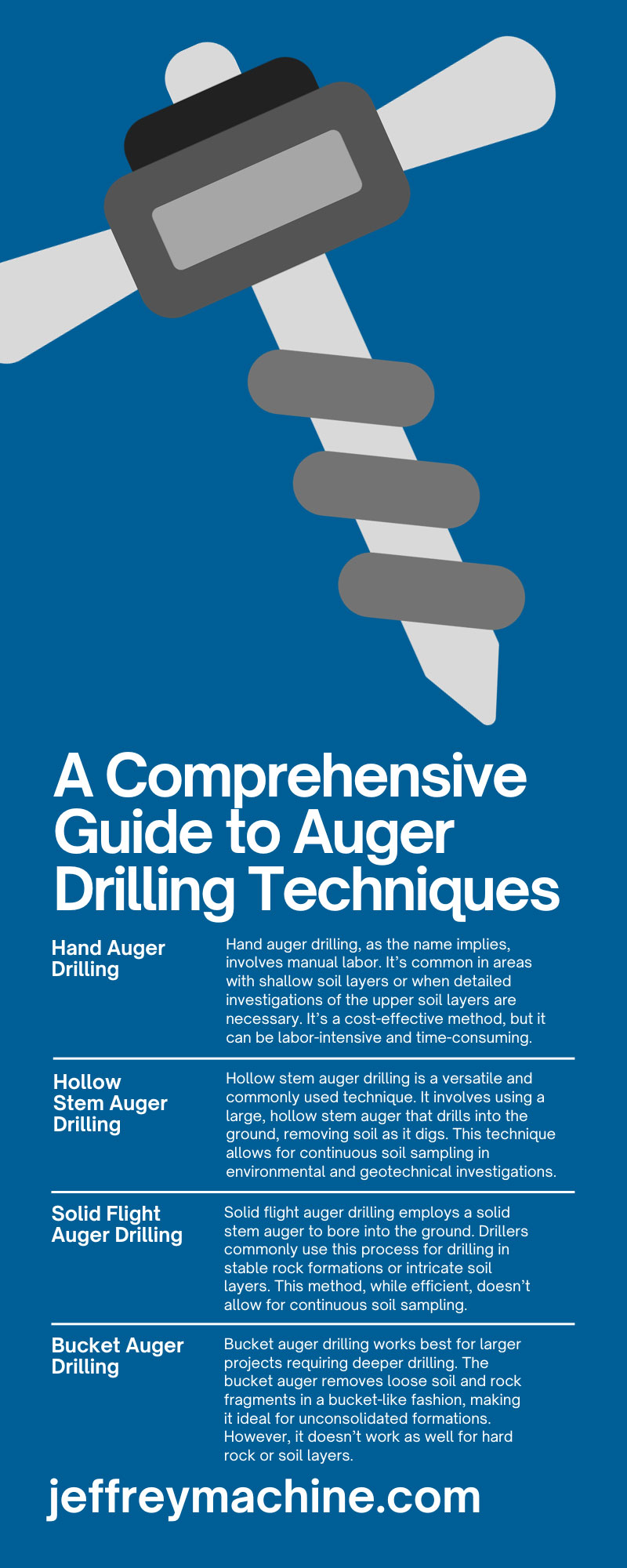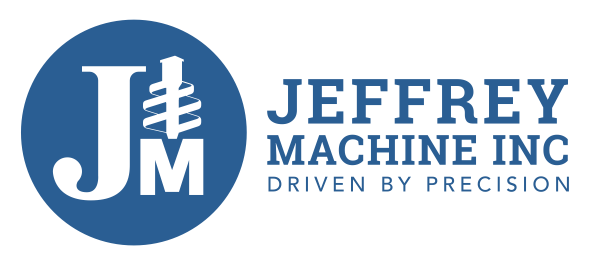A Comprehensive Guide to Auger Drilling Techniques

This world contains various processes that helped build it. Yet, our roads and communities wouldn’t be possible without construction workers.
Many workers use auger drilling in construction, environmental studies, and geotechnical investigations—a process with many fascinating parts. There are so many that we had to put the most exciting chunks in here. Here’s our comprehensive guide to auger drilling techniques.
Why Is Knowing Auger Drilling Techniques Important?
Learning about auger drilling techniques is essential for construction, geotechnical, and environmental professionals to complete projects, such as laying building foundations or collecting soil samples for environmental assessments. By mastering auger drilling methods, job sectors can increase job efficiency, reduce project costs, and ensure safer operations.
Meanwhile, getting to know these techniques can foster a deeper appreciation of how we built the environment around us. Knowledge of auger drilling techniques is potent whether you’re grappling with real-world project challenges or satisfying a thirst for learning.
Basic Auger Drilling Methods
Auger drilling is a drilling technique that uses a helical screw to drill into the earth and transport the drilled-out material to the surface. It’s a simple yet effective drilling method.
Hand Auger Drilling
Hand auger drilling, as the name implies, involves manual labor. It’s common in areas with shallow soil layers or when detailed investigations of the upper soil layers are necessary. It’s a cost-effective method, but it can be labor-intensive and time-consuming.
Hollow Stem Auger Drilling
Hollow stem auger drilling is a versatile and commonly used technique. It involves using a large, hollow stem auger that drills into the ground, removing soil as it digs. This technique allows for continuous soil sampling in environmental and geotechnical investigations.
Solid Flight Auger Drilling
Solid flight auger drilling employs a solid stem auger to bore into the ground. Drillers commonly use this process for drilling in stable rock formations or intricate soil layers. This method, while efficient, doesn’t allow for continuous soil sampling.
Bucket Auger Drilling
Bucket auger drilling works best for larger projects requiring deeper drilling. The bucket auger removes loose soil and rock fragments in a bucket-like fashion, making it ideal for unconsolidated formations. However, it doesn’t work as well for hard rock or soil layers.
Advanced Auger Drilling Techniques
Beyond the basic techniques, advanced auger drilling methods cater to specific needs and challenging environments. Understanding these can broaden your toolbox of drilling solutions, improving your adaptability and efficiency in various projects.
Double Auger Drilling
Double auger drilling, or dual rotary drilling, uses two augers working in unison. The upper auger drills a hole in the ground while the lower auger removes the excavated material. This method is beneficial in areas with loose or unconsolidated soil layers, as it minimizes the risk of borehole collapse.
Displacement Auger Drilling
Displacement auger drilling uses a specialized auger to displace the soil laterally, creating a hole without removing any material. Displacement auger drilling is necessary only when the soil’s surrounding integrity needs maintenance, such as installing heat pump systems in the ground.
Sonic Drilling
Sonic drilling is an advanced technique involving a drill using high-frequency mechanical oscillation into the ground. This method reduces friction on the drill string and auger, allowing for faster and cleaner drilling. Sonic drilling is particularly beneficial in sensitive environments where minimal waste generation is a priority.
Continuous Flight Auger (CFA) Drilling
Continuous Flight Auger (CFA) drilling is an advanced method often used to construct deep foundations. The process involves drilling to the required depth and then pumping concrete through the hollow stem as the auger slowly withdraws, creating a continuous pile. This technique is ideal in situations where maintaining the stability of the borehole throughout the drilling process is essential.
Each advanced technique has its benefits and challenges, and the application you choose depends on the project’s specific requirements. They expand the possibilities for tackling complex drilling scenarios and illustrate the precise and intricate nature of auger drilling.
Comparing Basic and Advanced Auger Drilling Methods
While primary and advanced auger drilling methods have their place in various fields, they differ significantly in complexity, applications, and efficiency.
Basic Auger Drilling Methods
These methods include hand, hollow stem, solid flight auger, and bucket auger drilling. They are foundational to understanding auger drilling, and many sectors use them. These techniques may suffice if you’re starting or working on smaller-scale projects. They are often more straightforward to understand and require less sophisticated equipment and attachments. However, they may also be time-consuming and physically demanding and less efficient in handling more complex soil conditions and larger-scale projects.
Advanced Auger Drilling Methods
Advanced drilling methods like double auger, displacement auger, sonic, and continuous flight auger have greater complexities but offer greater efficiency and precision. They can handle challenging environments and a more comprehensive range of soil conditions. However, they require sophisticated equipment and deeper technical knowledge. These advanced methods provide the necessary functionality and efficiency for professionals working on larger projects or under challenging conditions. The choice between basic and advanced auger drilling methods depends on project requirements, technical knowledge, and available resources.
Common Challenges and Solutions in Auger Drilling
Auger drilling can sometimes be a real head-scratcher. You might run into hiccups like hitting a hard rock layer, dealing with unstable soil, or struggling with a muddy mess. However, all these issues have solutions! Let’s get the lowdown on sorting out these drilling dilemmas.
Problem: Difficulty Penetrating Hard Formations
If you have a difficult time penetrating hard formations, use a solid flight auger drilling technique. This method is more effective for stable rock formations or hard soil layers that challenge conventional drilling methods. By using a solid flight auger with a continuous spiral blade, the drilling process can efficiently cut through these rigid formations, allowing for improved penetration and progress.
Problem: Slow Progress in Dense Soil
When it comes to slow progress, consider using a more powerful drilling rig or changing the drilling technique to a more suitable one for dense soil layers. Dense soils can significantly hinder drilling progress due to their compact nature. Upgrading to a more robust drilling rig with increased power can help you overcome this challenge by providing greater force and efficiency.
Problem: Trouble Achieving Desired Depth
Bucket auger drilling is best for deeper drilling projects, particularly in unconsolidated formations where achieving the desired depth can be challenging. Unconsolidated formations, such as loose soils and sediments, often lack stability, making conventional drilling methods less effective.
Understanding auger drilling techniques is vital for professionals in the field. These techniques highlight the delicate balance between man, machine, and earth and their profound impact on shaping our environment.
Whether you’re a seasoned drilling expert, a student of the earth sciences, or an inquisitive mind, we hope this guide has been a valuable journey into the fascinating world of auger drilling. Remember, the proper auger tooling can make a huge difference in your project’s success. With Jeffrey Machine, superior quality auger tooling is just a click away. Explore our range of products and let us help you take your drilling projects to new heights!

